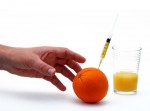 You’ve heard a lot about the dangers of high blood sugar, but there’s another health condition you need to know about: low blood sugar or hypoglycemia. This is a condition where the level of blood sugar or glucose drops to a point which causes severe symptoms to occur such as fatigue, headache, dry mouth, sweating, fainting, tremor, and hunger. The vast majority of people who suffer from hypoglycemia are diabetics, or people who have metabolic syndrome or are obese.
You’ve heard a lot about the dangers of high blood sugar, but there’s another health condition you need to know about: low blood sugar or hypoglycemia. This is a condition where the level of blood sugar or glucose drops to a point which causes severe symptoms to occur such as fatigue, headache, dry mouth, sweating, fainting, tremor, and hunger. The vast majority of people who suffer from hypoglycemia are diabetics, or people who have metabolic syndrome or are obese.
Low blood sugar can be caused by many different medical conditions; however, there are two major types of hypoglycemia. Fasting hypoglycemia is caused when the level of blood sugar falls between meals. This condition can be caused from taking too much insulin if you are a diabetic or if you are not eating enough food to sustain your blood sugar. In this case, eating every three hours can help keep your blood sugar levels regulated and help prevent this problem.
Foods that regulate blood sugar well are complex carbohydrates like legumes, vegetables, whole grains (such as oatmeal and quinoa), certain tubers like sweet potatoes, and whole fruit. Foods like poultry, yogurt, oily fish, and eggs are also very good protein sources which can keep blood sugar stable. The ingestion of “good” fats like extra virgin olive oil, avocado, flax seed, and nuts can also keep blood sugar and insulin levels lower.
The other type of low blood sugar is called reactive hypoglycemia and is associated with people who are obese and experience metabolic syndrome and insulin resistance. During this time, your body may produce too much insulin following a meal because of cellular insulin resistance.
When this happens, your blood sugar may drop quickly, leaving you hungry shortly after eating. To avoid this situation, eat small meals every three hours consisting of a smaller amount of low glycemic complex carbohydrates like a whole grain and combine it with a smaller portion of lean protein such as a chicken breast. To top this off, have a larger green salad with an olive oil balsamic vinaigrette dressing. Exercise is vital as well because it will help you burn the extra body fat around your waist which is also responsible for your insulin resistance.
In most instances, hypoglycemia is a consequence of poor blood glucose control in a diabetic patient. This common situation occurs when the patient takes too much insulin or medication to control their blood sugar resulting in blood sugar reductions which are too extreme. This also can happen if the diabetic does not eat enough or is exercising which decreases their need for insulin or blood sugar lowering medications. In these cases, the resulting hypoglycemia can be potentially serious. If you are a diabetic patient and are suffering from the symptoms of hypoglycemia, consult with your health care provider regarding further health management.
Most cases of low blood sugar not associated with diabetes can successfully be managed through lifestyle modifications including dietary changes, regular exercise participation, body fat reduction, and the implementation of stress-reduction techniques.
Source(s) for Today’s Article:
Hamdy, O., et al., “Hypoglycemia,” Medscape web site, August 19, 2013; http://emedicine.medscape.com/article/122122-overview, last accessed August 20, 2013
“Hypoglycemia,” Mayo Clinic web site; http://www.mayoclinic.com/health/hypoglycemia/DS00198, last accessed August 20, 2013.
Awoniyi, O., et al., “Hypoglycemia in Patients with Type 1 Diabetes: Epidemiology, Pathogenesis, and Prevention,” Curr Diab Rep. August 4, 2013.
